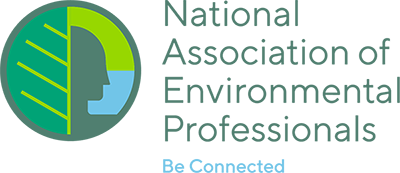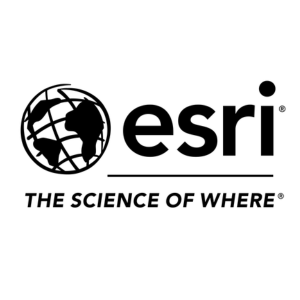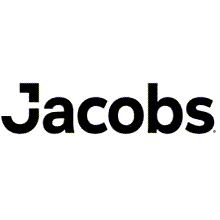2015 Environmental Excellence Award Recipients
President’s Award -
Project Name:
Border Gateway to Nature
Presented to:
4Walls International, The San Diego Foundation, United States Environmental Protection Agency, Secretaría de Medio Ambiente y Recursos Naturales, BECC/COCEF, California State Parks, Tijuana River National Estuarine Research Reserve, Las Hormiguitas, Proyecto Fronterizo y Educación Ambiental.
Description of Project:
Trash is beautifying a park in San Diego. Simultaneously improving the surrounding natural environment, 4Walls International is increasing the visibility of Border Field State Park by renovating the entrance using trash and art – an intentional and strategic plan to attract and connect kids with nature – in southern California’s last remaining intact wetlands.
Sediment, trash and other pollutants carried in storm water run-off threaten the Tijuana River Valley’s valuable ecological, cultural, recreational, and economic resources. Last year, The San Diego Foundation partnered with 4Walls to increase public access to Border Field State Park. The project used repurposed trash pulled from the River Valley and tributary canyons as building materials for park amenities such as benches and signage. Over 400 volunteers were engaged in cleaning up the river and processing trash to create “bottle-bricks”. The Environmental Protection Agency and SEMARNAT stepped in as bi-national partners creating a connecting park in Tijuana using the same building methods, creating over 100 jobs and planting over 1000 native plants. This bi-national park corridor repurposed over 4,000 plastic bottles, 1,000 pounds of miscellaneous plastics and foam from the river, and over 750 glass bottles. As a result of the reinvented entrance, CA State Parks saw an increase in visitors. The Border Gateway to Nature increased access to the beautiful open space at Border Field as well as created much needed green-park space in Tijuana. The project received lots of media and bi-national community participation.
Environmental Management Award –
Project Name:
George W. Shannon Wetlands Water Recycling Project at Richland-Chambers Reservoir
Presented To:
Tarrant Regional Water District, Alan Plummer Associates, Inc., CH2M Hill, Inc.
Description of Project:
The Tarrant Regional Water District’s Richland-Chambers Wetland is currently the largest project in the country utilizing constructed wetlands to reclaim effluent return flows for the purpose of augmenting a surface water supply source. TRWD diverts return flows from the Trinity River contributed by wastewater treatment facilities operated by customers of their raw water supplies into a 2,022 acre constructed wetland located on the public Richland Creek Wildlife Management Area (RCWMA). The constructed wetland provides treatment for removal of sediments and nutrients from the water before it is lifted via a second pump station over the Richland-Chambers Reservoir dam for discharge into the reservoir. The wetland improves the quality of the river water to a condition that is comparable to the natural tributary inflows to the reservoir. Water quality improvement is derived from natural treatment mechanisms that are powered by sunlight, wind, plants, and microbes. No chemicals are used in the treatment process, and the only electricity inputs are for pumping the water. In addition to the supplemental yield of up to 63,000 acre-feet per year, the constructed wetland provides multiple benefits of wetland habitat, public education and research opportunities, and enhances both passive and active recreational uses of the RCWMA.
NEPA Excellence Award -
Project Name:
Valles Caldera National Preserve – Landscape Restoration and Stewardship Plan
Presented to:
Marie E. Rodriguez, Dr. Robert Parmenter, John Swigart, Dr. Ana Steffen, Berta Pantoja, Patti Steinholtz, Vince Archer, Eric Moser, Don Helmbrecht, Anton Jackson, Brooke DeVault, Janet Moser, Joshua Wilson, Anne Bradley, Bryan Bird, Eytan Krasilovsky, Kent Reid.
Description of Project:
The Valles Caldera National Preserve, Landscape Restoration and Stewardship Plan, as indicated by the title, defines the restoration and ongoing stewardship of the natural and cultural resources and habitats of the nearly 89,000 acre Valles Caldera in north-central New Mexico.
The land had been a privately owned working ranch for over a century before being acquired by the federal government in 2000 as “an experimental management regime”. The experimental management of resources enclosed within an intact caldera and watershed created a unique opportunity for inventory, assessment, planning, and decision-making and the application of adaptive management at a landscape scale.
The preserve’s extensive grasslands, streams, abundant wildlife as well as its volcanic formation and resulting unique ecology, make it a special place to many. The passion, knowledge, and dedication by a diverse public, non-governmental organizations, and the scientific community, along with a new experimental management regime also created a unique opportunity to collaborate on its long-term stewardship.
The divergence of these opportunities lead to another unique opportunity: To systematically incorporate collaboration and adaptive management into the NEPA process, ultimately improving both our decisions and outcomes.
Public Involvement Award-
Project Name:
International Dark Sky Places
Presented to:
International Dark-Sky Association
Description of Project:
Light pollution is a steadily growing problem throughout the world that is unfortunately poorly addressed by most national environmental policies. International Dark Sky Places (IDSP) is an incentive-based designation program established in 2001 to help solve this environmental problem. It motivates communities and protected areas to proactively mitigate light pollution and rewards them with a designation that recognizes their stewardship of an often-neglected natural resource: the night sky. The program provides three types of designations: Community, Park and Reserve. Since its inception, more than 35 places have earned an IDSP designation. The program provides educational resources, model ordinances and other assistance to land managers and public officials, allowing them to implement measures that preserve and even restore natural night skies. These measures include public educational programs; night-sky quality surveys; and inventories and retrofits of existing outdoor lighting. They also involve public policies that manage outdoor lighting and improve public safety, reduce energy consumption, and protect human health and wildlife. The program encourages private/public partnerships, often born of individual efforts from local citizens. It enables grassroots efforts and encourages landowners and governments to implement good public policies that improve the quality of the nightscape environment.
Best Available Technology Award -
Project Name:
Advanced Horizontal Remediation Well Design Rapidly Cleans Up International Airport
Presented to:
Directional Technologies, Inc. - Kathy Sequino- President, Mike Sequino- Senior Vice President
Description of Project:
DTI was challenged with designing a horizontal well-based solution to remediate an extensive subsurface gasoline release from a buried pipeline at an International Airport. The subsurface gasoline plume encompassed an area of over three acres, migrated into an adjoining bay, and extended beneath an active runway and taxiway where flights arrive and depart around once per minute. There was an extreme sense of urgency on the part of stakeholders to remediate the site as quickly as feasible. Complicating factors included severe site security restrictions which limited available work locations and the requirement to keep the active runway operational.
DTI designed and installed a state of the art network of seven Air Sparge/Soil Vapor Extraction wells, each approximately 900 feet long. DTI installed the wells from a safe location several hundred feet away from the active runway using the directional drill rig’s remote tracking, installing several of the wells adjacent to the active runway without delaying a single flight. One SVE well cumulatively withdrew nearly 27,000 lbs of gasoline vapors during just a six month period. Over the course of the removal, over 130,000 gallons of LNAPL was recovered, 80,000 lbs of vapor phase mass removed, groundwater concentrations reduced significantly and no measurable LNAPL after 1 year of operation. The site requires no further action.
Conservation Programs Award -
Project Name:
International Boundary and Water Commission, United States and Mexico, Minute 319 Environmental Pulse Flow and Monitoring, Binational Collaboration and Conservation
Presented To:
Carlos Peña, Jr - International Boundary and Water Commission, U.S. Section, Luis Antonio Rascón Mendoza - International Boundary and Water Commission, Mexican Section, Mario López Perez - National Water Commission, Mexico, Jennifer McCloskey - Bureau of Reclamation, Jennifer Pitt - Environmental Defense Fund, Osvel Hinojosa - Pronatura Noreste
Description of Project:
After several years of discussions that included the participation of federal and state authorities, and nongovernmental organizations from both countries, officials with the International Boundary and Water Commission, representing the United States and Mexico, signed a binational agreement on November 20, 2012 known as Minute 319 to the 1944 Treaty between the two countries. The agreement, which will remain in effect for five years, provides for a series of joint cooperative actions between the two countries. One of the key elements of Minute 319 was the first-ever binational agreement to provide water for environmental flows for the normally dry Colorado River Delta, in order to gain important scientific information on the effectiveness of the flows. Stakeholders from both countries, such as the Environmental Defense Fund, Pronatura Noroeste, Sonoran Institute, The Nature Conservancy, and federal agencies such as IBWC, Mexico’s National Water Commission and the Bureau of Reclamation worked cooperatively to plan, implement and monitor this unique undertaking, which involved both a one-time “pulse flow” and longer duration base flows designed to enhance riparian habitat in the Delta. Together, these flows are expected to provide for the restoration of approximately 950 hectares of habitat, including native willow and cottonwood trees.
Education Excellence Award -
Project Name:
Falcon Autistic Solar Team
Presented to:
Kevin Crosby
Description of Project:
In 2010, I facilitated the creation of a solar club at our school where my students serve as peer tutors for other schools about how a solar panel takes radiant energy from the sun and converts it into electricity. The focus of our Falcon Autistic Solar Team (FAST) is to travel to other schools in Bakersfield, California and teach students about how solar energy works. Our solar demonstrations include solar cars, a solar house, and a solar-powered Ferris wheel. Falcon Autistic Solar Team members also demonstrate other solar energy conversions such as how radiant energy is used to cook food in a Solar Oven and how solar beads, that contain a pigment, change colors when exposed to ultraviolet light from the sun. Other goals of the Falcon Autistic Solar Team are to help my special-needs students gain a concrete understanding of science areas such as energy usage, forms of energy, photosynthesis, solar power, and electricity. Their presentations to other schools allow his students with Autism to work on their socialization skills and public speaking skills.
Environmental Stewardship Award -
Project Name:
A-Team For Wildlife’s Int’l A-Team & Jungle Deep Podcast
Presented To:
Ken Jones, Founder, Wildlife Advocate
Description of Project:
The International A-Team, a project of A-Team For Wildlife, is the first organization of young prodigies of conservation coming together from around the world to inspire and lead all youth in wildlife conservation education efforts. These 17 youth, ages 8 to 18, from 5 different countries, have been identified, vetted, and invited to join this unique group to share their amazing stories of success and motivate all children to get involved in saving endangered species. www.A-TeamForWildlife.org
-The Jungle Deep Podcast is one of the first internet radio shows about conservation, connecting field scientists, authors, actors, and adventurers with the public in a fun, and sometimes offbeat way, in its bid to popularize environmental conservation. The president of Conservation International, Tiki Music experts, a National Geographic Photographer, and TARZAN of AFRICA have been among the guests. www.JungleDeep.org
Planning Integration Award –
Project Name:
Installation Sustainability Component Plan, Schofield Barracks, U.S. Army Garrison-Hawaii
Presented to:
U.S. Army Corps of Engineers, Southwestern Division, Regional Planning and Environmental Center; U.S. Army Engineer Research and Development Center, Construction Engineering Research Laboratory; U.S. Army Corps of Engineers, Pacific Ocean Division; U.S. Army Garrison-Hawaii; The Urban Collaborative, LLC
Description of Project:
This pilot project injected a sustainability component into master planning for Schofield Barracks at U.S. Army Garrison-Hawaii. This novel approach breaks with the traditional narrow focus on building envelopes by adding a 35,000-foot-level planning approach with a districtwide holistic view. We defined both the low-hanging sustainability fruit now, and what actions over a longer time need to be implemented to help installations meet challenging Net Zero mandates.
Key to our approach was to develop a new Net Zero Planner with our partners at the U.S. Army Engineer Research and Development Center, Construction Engineering Research Laboratory. Corps of Engineers personnel are trained to use this web-based modeling tool, which can run thousands of districtwide simulations. This helps develop master planning sustainability guidelines, which define actions that can be implemented over the next 5, 10 and 20 years that are necessary to meet Net Zero goals for energy, water, waste and storm water.
We showed how energy at Schofield Barracks could be cut by 59 percent, water use cut by 91 percent, waste cut by 72 percent and storm-water runoff cut by 47 percent using the "best case" effort scenario.
|



